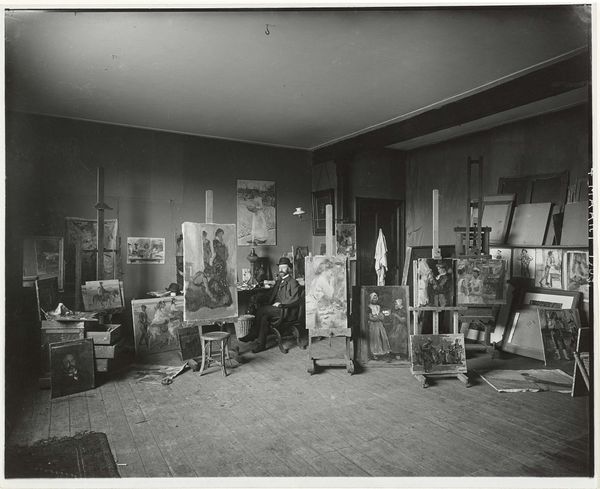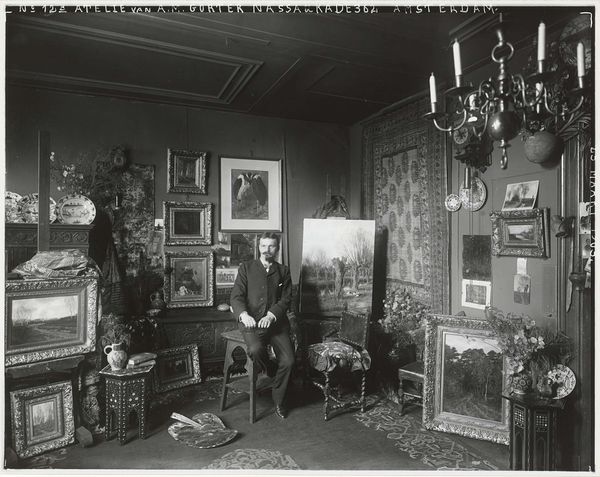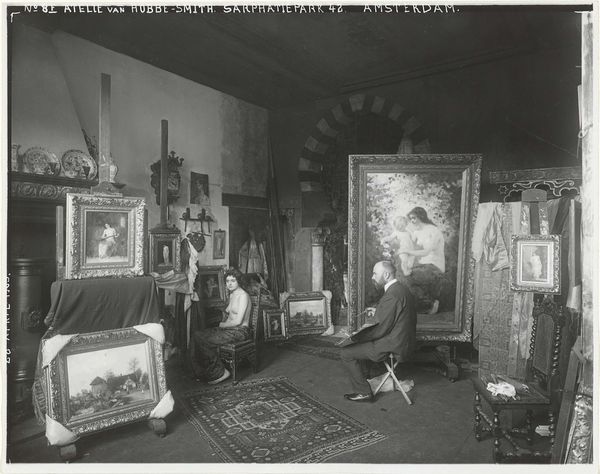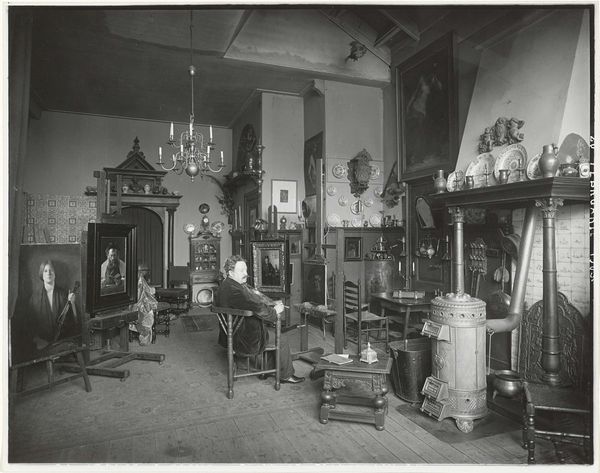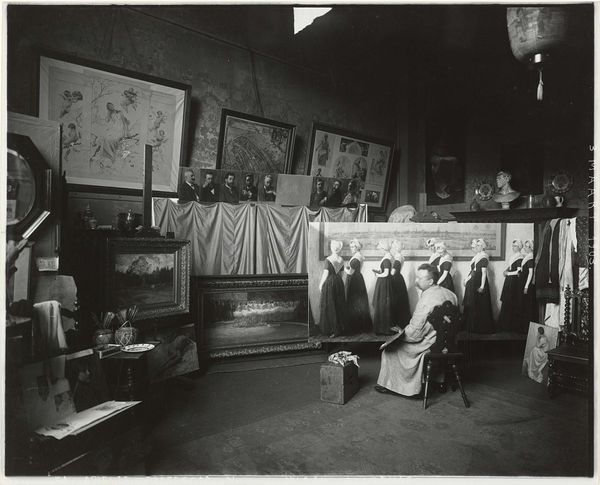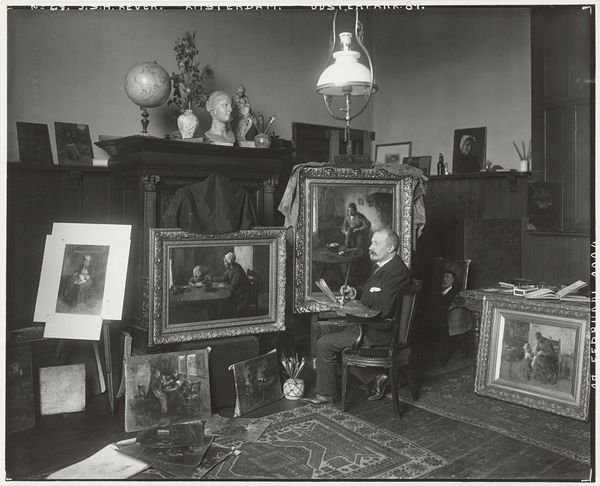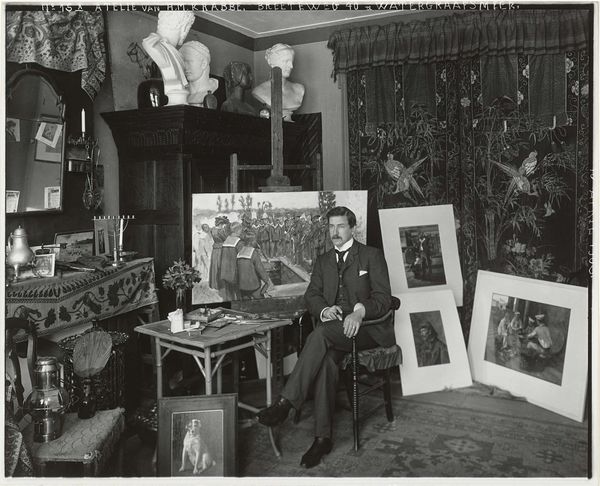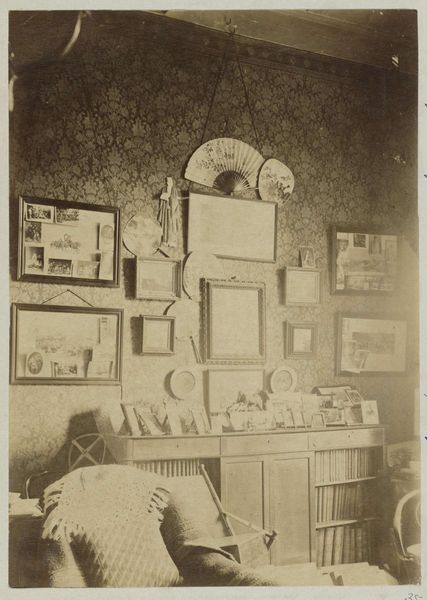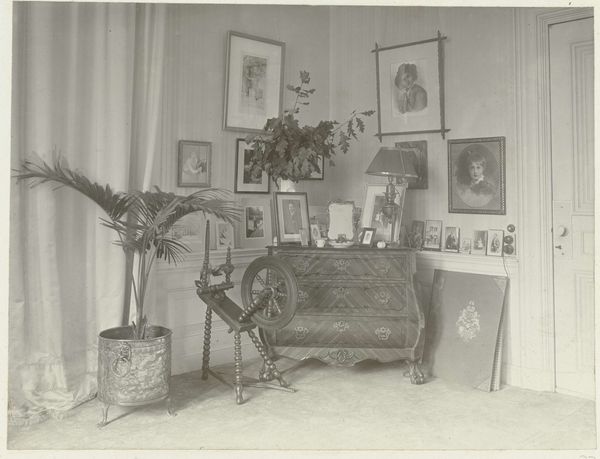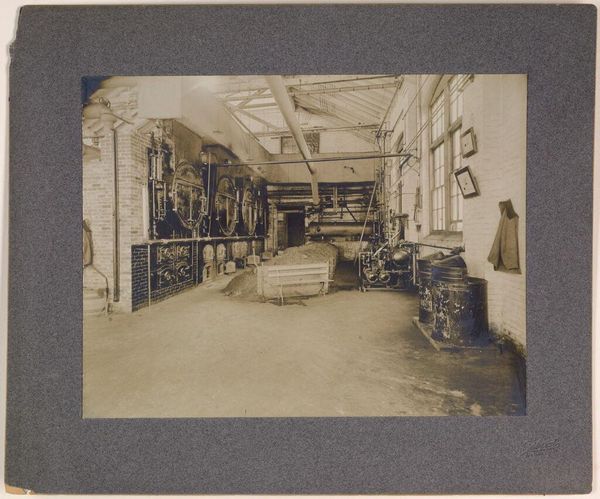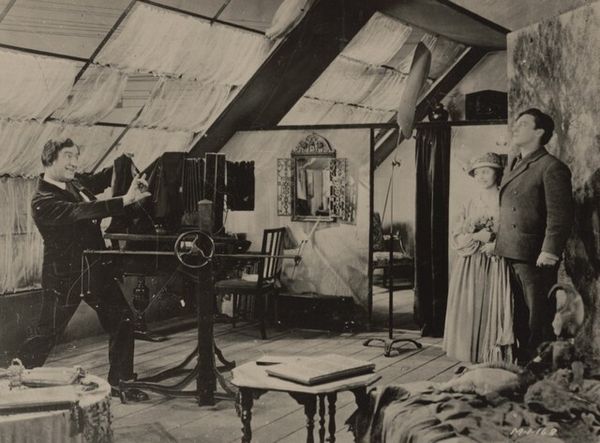
Schilder Ed. Frankfort in zijn atelier aan de Willibrordusstraat in Amsterdam after 19
0:00
0:00
photography, gelatin-silver-print
#
portrait
#
black and white photography
#
photography
#
gelatin-silver-print
#
monochrome photography
#
genre-painting
#
monochrome
Dimensions: height 243 mm, width 300 mm
Copyright: Rijks Museum: Open Domain
Editor: This gelatin-silver print, "Schilder Ed. Frankfort in zijn atelier aan de Willibrordusstraat in Amsterdam," was taken after 1900 by Sigmund Lӧw. The subject is the artist in his studio, surrounded by artwork. The photograph has such a detailed texture, and I’m struck by how crammed the space seems to be. What's your take? Curator: It's interesting to consider the staging here, isn't it? The density speaks to a certain bohemian ideal prevalent at the turn of the century—an artist surrounded by the tools and trappings of their trade, reinforcing the idea of creative immersion. But let's also consider Löw, the photographer, and his intentions. How does his gaze, framing Frankfort in this controlled chaos, influence our understanding of the artist’s role? Editor: I suppose it creates a very specific image, reinforcing the popular perception of what an artist’s life might be. Do you think the photograph romanticizes that idea? Curator: Precisely. This photograph is more than a simple document; it is participating in the construction of the artist's identity for public consumption. The weapons displayed alongside the paintings also signal towards an artistic virility that perhaps needed emphasizing through this type of photograph. What impact did this romantic vision have on society’s relationship with artists? Editor: I imagine it built up a certain mystique, maybe making art feel more exclusive and the role of the artist more important than it really was, which might affect gallery sales as a result? Curator: Exactly! And also created unrealistic expectations for future artists, placing the art world in this position of having to meet the expectation. Editor: That's a fascinating perspective. I had only considered what the image presented on its surface, but I see the underlying dynamics. It has changed how I will interpret such images going forward. Curator: Indeed. Looking at the photograph within its socio-historical context reveals how image production itself plays a vital role in crafting our understanding of art and artists.
Comments
No comments
Be the first to comment and join the conversation on the ultimate creative platform.
